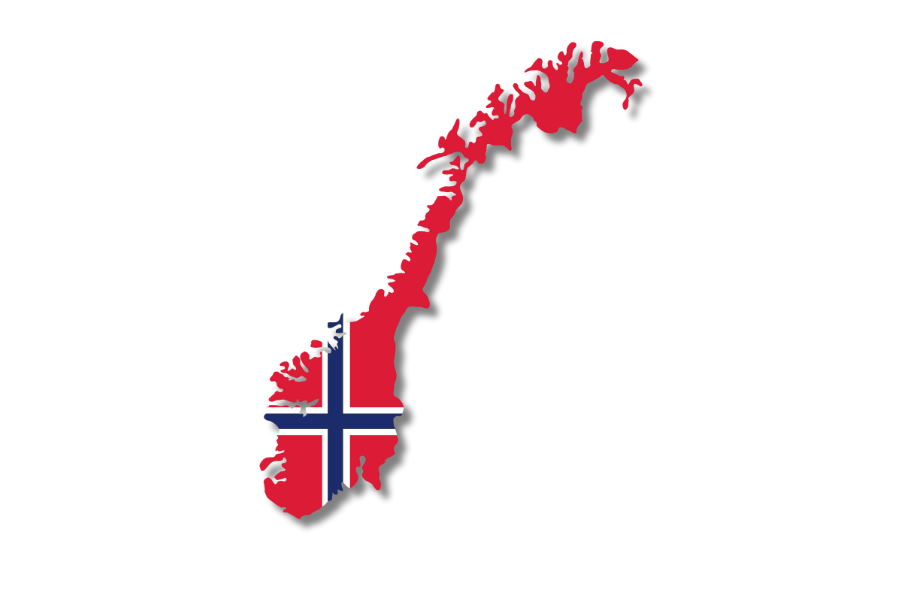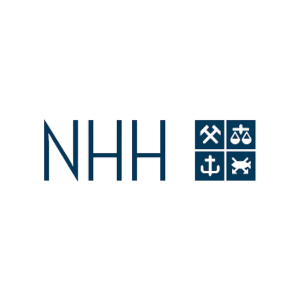NORWAY
Overview of the NORWAY
Norway, located in Northern Europe on the Scandinavian Peninsula, is bordered by Sweden, Finland, and Russia. The country features stunning landscapes, including fjords, mountains, and coastlines along the North Atlantic and Barents Seas. Its climate varies from temperate along the coast to subarctic in the interior. Norway boasts high health standards, efficient public transport systems, and a strong emphasis on cultural preservation and environmental sustainability.

Norway excels in infrastructure with modern facilities and advanced technology. It consistently ranks high in global indices for quality of life and human development. The country is known for its safety and inclusivity, providing a welcoming environment for immigrants. Opportunities are abundant in various sectors, including energy, technology, and education, supported by a robust economy and progressive policies.
Percentage Distribution of Non-Immigrant Student Visa Holders in Norway (2014-2023 In Percentage)
Percentage Distribution of Non-Immigrant Visa Holders in Norway (2014-2023 In Percentage)
VISAS
Climate and Seasons

SPRING
March to May
Minimum: 50°F (10°)
Min 0°C to Max 15°C

SUMMER
June to August
Min 10°C
Max 20°C

AUTUMN
September to November
Min 5°C to Max 15°C

WINTER
December to February
Min -10°C to Max 5°C
WHY STUDY IN NORWAY?
Studying in Norway offers a unique and enriching experience with numerous advantages. The country is renowned for its high-quality education system, which emphasizes research, innovation, and critical thinking. Norwegian universities and colleges provide a range of programs in English, attracting students from around the globe. Education is often free or low-cost for international students, and many institutions offer scholarships and funding opportunities. Norway’s stunning natural landscapes, including fjords and northern lights, provide an exceptional backdrop for student life. The country’s strong focus on sustainability and environmental issues aligns with global trends, offering students a chance to engage in cutting-edge research. Moreover, Norway is known for its safe, inclusive, and high-quality living standards. The multicultural environment and strong international connections enhance personal and professional growth, making it an ideal destination for students seeking a top-tier education and a vibrant cultural experience.
COURSES
Computer Science
Business Analytics
MBA
Mechanical Engineering
Major Courses Opted by Students (2014-2023)

Test Preparation at PVR Global Educational Services
PVR Global Educational Services offers tailored training for GRE, IELTS, PTE, SAT, GMAT, and Duolingo tests. Expert instructors provide personalized study plans, practice materials, and mock exams to boost proficiency in reading, writing, listening, speaking, and quantitative skills. Flexible scheduling and comprehensive support help students achieve high scores and succeed in their academic and professional endeavors.
Quick Facts about NORWAY
Norway offers world-class education with a focus on research, innovation, and critical thinking, ensuring excellent academic standards.
Public universities often have low or no tuition fees for international students, making higher education financially accessible.
Many universities offer a wide range of courses and programs in English, catering to international students.
Norway’s breathtaking landscapes, including fjords and mountains, provide a unique and inspiring environment for studying and living.
Institutions offer robust support services, including academic advising, career counseling, and accommodation assistance, ensuring a smooth transition.
Norway is known for its safety, low crime rates, and inclusive society, creating a welcoming environment for students.
Students can immerse themselves in Norway’s rich cultural heritage, with opportunities to explore history, arts, and vibrant local traditions.
Courses Opted by International Students in Norway (2014-2023)
Education System in NORWAY
Primary education starts at age 6, with a focus on basic skills, followed by lower and upper secondary education.
Grade System: Grades 1-10 for primary and lower secondary; Grades 11-13 for upper secondary.
Duration: Primary (10 years), Secondary (3 years).
Average Fee: Public schools are free; private schools may charge fees.
Tertiary education includes undergraduate and graduate studies, emphasizing academic and professional development through various programs and research opportunities.
Grade System: Typically A-F, with A being the highest and E the lowest passing grade.
Duration: Varies by program.
Average Fee: Public universities often have low tuition fees for international students; private institutions may charge more.
Undergraduate programs provide foundational knowledge and skills in various fields, typically culminating in a Bachelor’s degree.
Grade System: A-F grading scale, with A as the highest grade.
Duration: 3 years.
Average Fee: Public universities may charge around NOK 0-2,000 per year; private institutions are more expensive.
Master's programs offer advanced study and specialization, preparing students for professional practice or further academic research.
Grade System: A-F grading scale, with A as the highest grade.
Duration: 2 years.
Average Fee: Public universities may charge around NOK 0-2,000 per year; private institutions may charge more.
Doctoral programs focus on original research, leading to a Ph.D., and contribute to academic and professional fields.
Grade System: Pass/Fail, with a focus on research quality.
Duration: 3-4 years.
Average Fee: Typically free or minimal fees at public institutions; private institutions may have higher fees.

Identifying the Right Institution
Check global rankings and academic reviews to assess the university’s reputation and quality of education in your field of interest.
Evaluate the university’s research facilities, output, and partnerships to ensure ample opportunities for academic and professional development.
Review the qualifications, research contributions, and industry experience of the faculty members to gauge the quality of education.
Look for a wide range of programs and specializations to match your academic and career interests effectively.
Consider the availability of academic advising, career counseling, and other support services to aid in your overall student experience.
Assess the university’s global partnerships and exchange programs, which can enhance educational opportunities and cultural experiences.
Examine the quality of campus infrastructure, including libraries, labs, and recreational facilities, to ensure a conducive learning environment.
No of Students placed in different sectors (2014-2023 In Percentage)
Success Rate of Indian Students in the Norway by Sector (2014-2023 In Percentage)
Getting a NORWAY Visa
Identify the specific visa type required for your purpose—study, work, tourist, or family reunification. Each type has different eligibility criteria and application procedures.
Review the specific requirements for your chosen visa category, including financial proof, language proficiency, and educational qualifications. Requirements vary depending on the visa type and applicant's situation.
Collect all necessary documents, such as passport, photographs, proof of funds, and invitation letters. Ensure all documents meet the Norwegian authorities' specifications and are up-to-date.
Register an account on the Norway visa application portal. This step is essential for managing your application, receiving updates, and submitting your documents online.
Fill out the online visa application form accurately, providing all requested details. Double-check for completeness and correctness before submission to avoid delays or rejections.
Pay the required visa application fee, which varies by visa type. Payment is usually done online through the application portal. Keep the receipt for your records.
Schedule and attend an appointment to provide biometric data, including fingerprints and photographs, if required for your visa type. Biometrics are used for identity verification.
If an interview is required, attend it as scheduled. Be prepared to discuss your application details and provide any additional information or clarification needed by the consulate.
After submission, your application will be processed. Processing times vary, so check the status regularly and be patient while the authorities review your application.
Once approved, you will receive your visa. Verify all details for accuracy. If there are issues, contact the relevant authorities for corrections or additional instructions.
Ensure all documents are translated into English or Norwegian if required. Keep copies of all documents and receipts. Check for any travel advisories or additional entry requirements before departure.
List of Universities










Intake details
Intake | Start Dates | Remarks |
|---|---|---|
Fall | September to October | Primary intake for most programs; peak admission period. |
Spring | January to February | Secondary intake; fewer programs available compared to Fall. |
Summer | May to June | Limited programs; typically for accelerated courses or specific programs. |
Winter | November to December | Not commonly used; available for some programs with specific start dates. |
Deadlines
Deadline Type | Fall Intake | Spring Intake |
|---|---|---|
Scholarship Deadlines | April - May | September - October |
Admission Deadlines | May - June | October - November |
Best Time to Start the Process | September - October | March - April |
Last Date to Apply for Admission | June 1st | November 1st |
Documents required
Document Type | Requirements | Remarks |
|---|---|---|
Passport | Valid for at least six months, recent photo. | Ensure your passport is up-to-date and valid. |
Transcripts | Official academic transcripts from previous institutions. | Must be in English or translated; notarized copies may be required. |
Proof of English Proficiency | TOEFL, IELTS, or equivalent test scores. | Check minimum score requirements for your program. |
Letters of Recommendation | Typically 2-3 letters from academic or professional references. | Should be recent and relevant to your application. |
Statement of Purpose | Personal statement detailing academic and career goals. | Tailor to each program; highlight your fit and aspirations. |
Resume/CV | Updated resume or curriculum vitae. | Include relevant academic and work experience. |
Financial Proof | Bank statements or financial guarantees. | Demonstrates ability to cover tuition and living expenses. |
Application Form | Completed university application form. | Ensure all sections are filled accurately. |
Photographs | Recent passport-sized photographs. | Follow specific photo requirements provided by the university. |
Health Insurance | Proof of health insurance coverage. | Some universities require proof of coverage upon arrival. |







